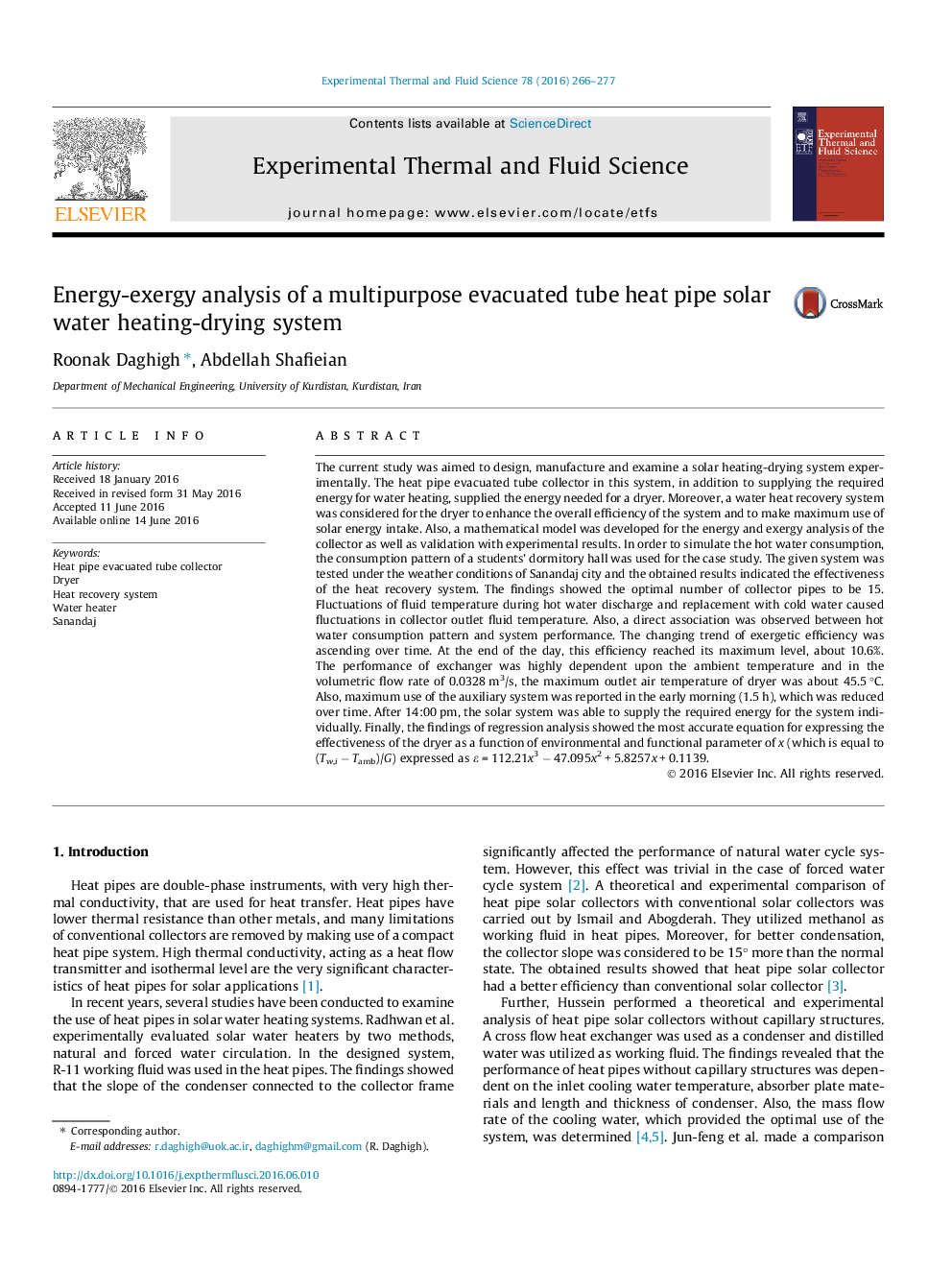| Article ID | Journal | Published Year | Pages | File Type |
|---|---|---|---|---|
| 651014 | Experimental Thermal and Fluid Science | 2016 | 12 Pages |
•A heat-pipe evacuated tube solar dryer-water heater manufactured and examined.•A heat recovery system considered for the dryer to enhance the overall efficiency.•The maximum outlet air temperature of dryer was about 45.5 °C.•The maximum outlet water temperature of collector was about 56.3 °C.•At the end of the day, the exergetic efficiency reached its maximum level, 10.6%.
The current study was aimed to design, manufacture and examine a solar heating-drying system experimentally. The heat pipe evacuated tube collector in this system, in addition to supplying the required energy for water heating, supplied the energy needed for a dryer. Moreover, a water heat recovery system was considered for the dryer to enhance the overall efficiency of the system and to make maximum use of solar energy intake. Also, a mathematical model was developed for the energy and exergy analysis of the collector as well as validation with experimental results. In order to simulate the hot water consumption, the consumption pattern of a students’ dormitory hall was used for the case study. The given system was tested under the weather conditions of Sanandaj city and the obtained results indicated the effectiveness of the heat recovery system. The findings showed the optimal number of collector pipes to be 15. Fluctuations of fluid temperature during hot water discharge and replacement with cold water caused fluctuations in collector outlet fluid temperature. Also, a direct association was observed between hot water consumption pattern and system performance. The changing trend of exergetic efficiency was ascending over time. At the end of the day, this efficiency reached its maximum level, about 10.6%. The performance of exchanger was highly dependent upon the ambient temperature and in the volumetric flow rate of 0.0328 m3/s, the maximum outlet air temperature of dryer was about 45.5 °C. Also, maximum use of the auxiliary system was reported in the early morning (1.5 h), which was reduced over time. After 14:00 pm, the solar system was able to supply the required energy for the system individually. Finally, the findings of regression analysis showed the most accurate equation for expressing the effectiveness of the dryer as a function of environmental and functional parameter of x (which is equal to (Tw,i − Tamb)/G) expressed as ε = 112.21x3 − 47.095x2 + 5.8257x + 0.1139.
